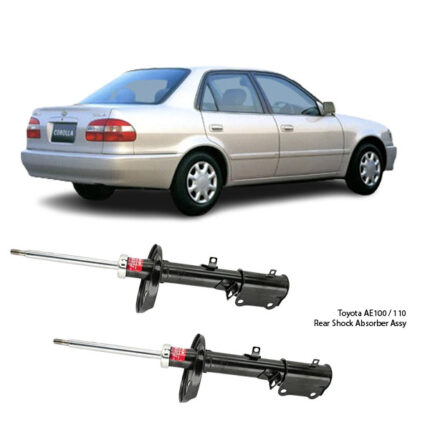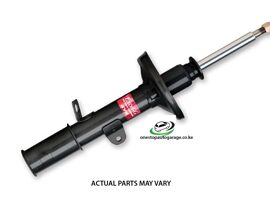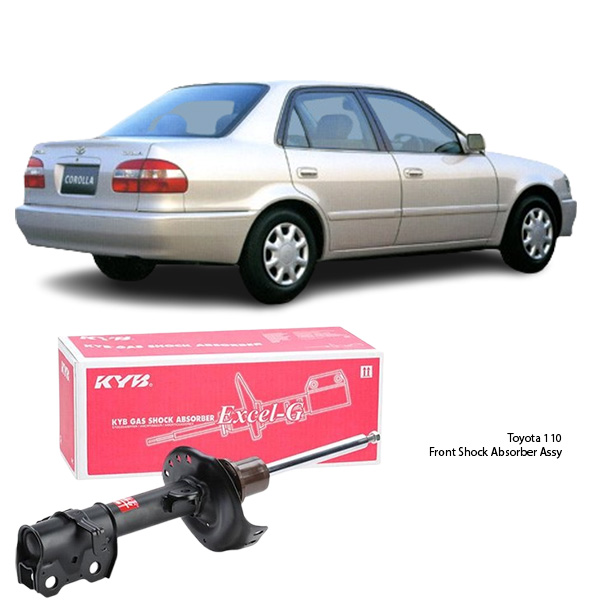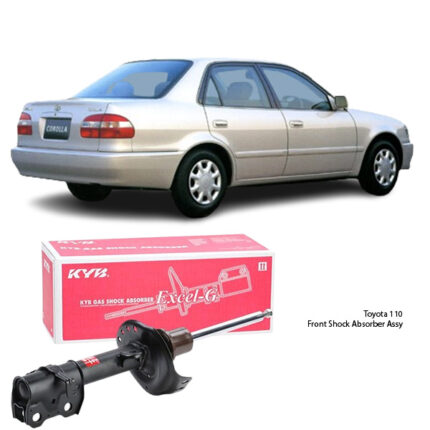-9%
Get Toyota Corolla AE91/100/110 Front Shock Absorber Assy 333114 in Kenya
The front shock absorber assembly is one of the most important components of a vehicle’s suspension system. It plays a crucial role in ensuring a smooth, stable, and controlled ride by absorbing road shocks and keeping the tires in contact with the ground.
A worn-out or failing front shock absorber assembly can lead to:
Poor handling and control
Uneven tire wear
Increased braking distance
Bumpy and uncomfortable rides
What is a Front Shock Absorber Assembly?
A front shock absorber assembly is a key component in the vehicle’s suspension system. It works by controlling the motion of the springs and dampening the impact from road bumps, potholes, and rough surfaces.
Components of a Front Shock Absorber Assembly
A typical shock absorber assembly includes:
Shock Absorber (Damper): Controls suspension movement and absorbs impact.
Coil Spring: Helps maintain ride height and absorbs larger impacts.
Strut Mount: Connects the shock absorber to the vehicle’s chassis.
Bushing & Bearings: Reduce vibrations and enhance durability.
How Front Shock Absorbers Work?
The shock absorber functions by converting the kinetic energy from suspension movement into heat energy, which is then dissipated.
When you drive over a bump, the coil spring compresses, absorbing the impact.
The shock absorber controls the rebound, preventing excessive bouncing.
This ensures stability, control, and comfort for the driver and passengers.
Without a functioning shock absorber, the vehicle would bounce uncontrollably, making it difficult to handle and unsafe to drive.
Types of Front Shock Absorbers
There are different types of shock absorbers, each designed for specific vehicle needs.
Hydraulic (Oil-Filled) Shock Absorbers
Use hydraulic fluid to absorb shock and dampen vibrations.
Found in older vehicles and some modern applications.
Gas-Charged Shock Absorbers (Gas Struts) 💨
Contain pressurized nitrogen gas, reducing aeration in the hydraulic fluid.
Provide better stability, control, and longevity.
Common in modern vehicles and performance cars.
Adjustable Shock Absorbers
Allow drivers to adjust stiffness based on road conditions.
Used in sports cars and off-road vehicles.
Coilover Shock Absorbers
Combine shock absorber and coil spring into a single unit.
Used in high-performance and racing vehicles.
Most passenger cars and SUVs use gas-charged or hydraulic shock absorbers, while performance vehicles may have coilovers or adjustable shocks.
Signs of a Worn-Out Front Shock Absorber
A failing front shock absorber can affect handling, comfort, and safety. Here are the common signs of shock absorber failure:
Excessive Bouncing & Rough Ride
- Car bounces multiple times after hitting a bump.
- Ride feels uncomfortable and shaky.
Increased Braking Distance
- Car takes longer to stop than usual.
- Vehicle may nose-dive when braking hard.
Uneven Tire Wear
- Cupping or bald spots on tires.
- Worn-out shocks cause poor tire contact with the road.
Leaking Hydraulic Fluid
- Visible oil leakage on the shock absorber.
- Indicates damaged seals or internal failure.
Steering & Handling Issues
- Car feels unstable, especially at high speeds.
- Steering feels loose or unresponsive.
Clunking or Knocking Noises
- Unusual metallic noises when driving over bumps.
- Indicates internal damage to the shock absorber.
Ignoring these symptoms can lead to unsafe driving conditions and costly repairs!
When to Replace Front Shock Absorbers?
Recommended replacement: Every 50,000 – 100,000 km (depending on driving conditions).
Replace if:
- You experience any of the failure symptoms above.
- You frequently drive on rough roads or carry heavy loads.
- Your car is bouncing excessively or feels unstable.
How to Replace the Front Shock Absorber Assembly
Replacing the front shock absorbers can restore ride quality and safety.
Tools Required
Jack & Jack Stands
Wrench Set
Socket Set
Coil Spring Compressor (if applicable)
New Front Shock Absorber Assembly
Step-by-Step Installation Guide
Lift the Vehicle
- Secure the car on jack stands.
- Remove the front wheels to access the suspension components.
Remove the Old Shock Absorber
- Unbolt the top mount and bottom mounting bolts.
- Carefully remove the shock absorber assembly.
Install the New Shock Absorber
- Align the new shock absorber with the mounting points.
- Tighten bolts to the manufacturer’s torque specifications.
Reinstall Wheels & Lower the Car
- Reinstall the wheels and lug nuts.
- Lower the car and tighten all bolts properly.
Tip: After replacing shock absorbers, it’s recommended to get a wheel alignment to ensure proper suspension geometry.
Follow us on Facebook for more parts.




